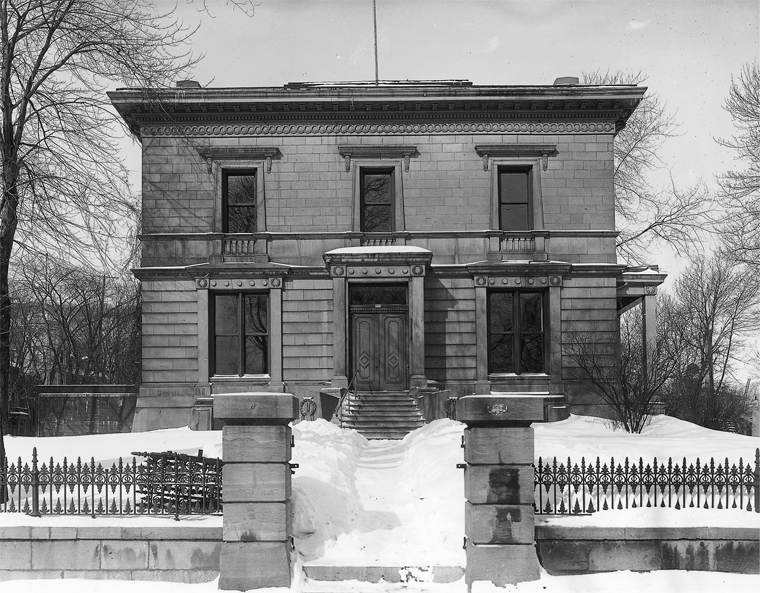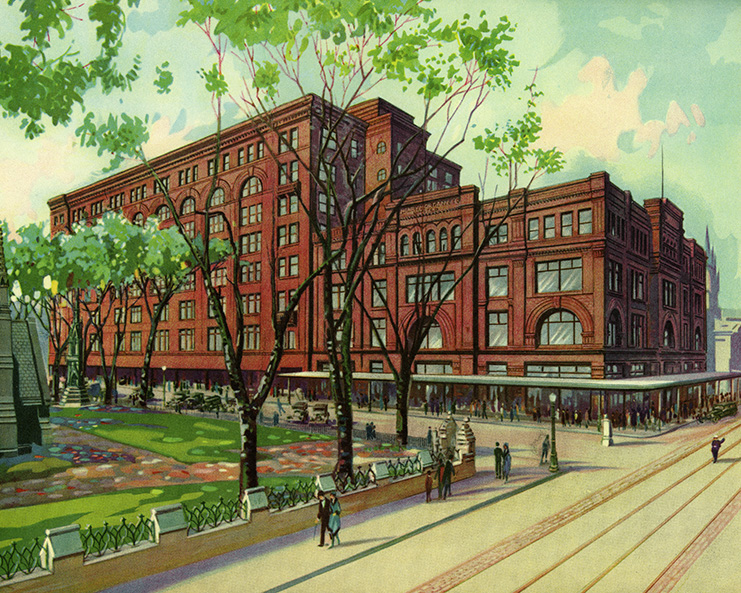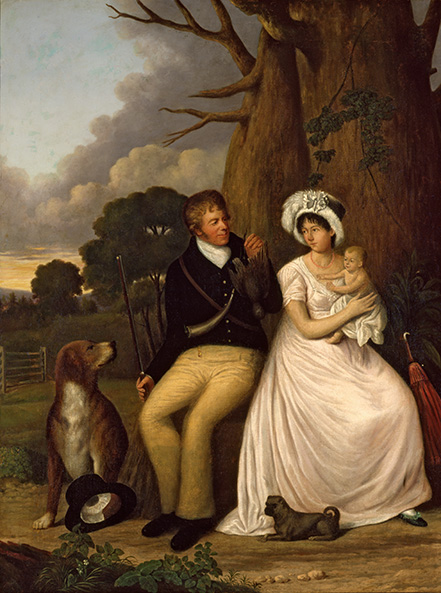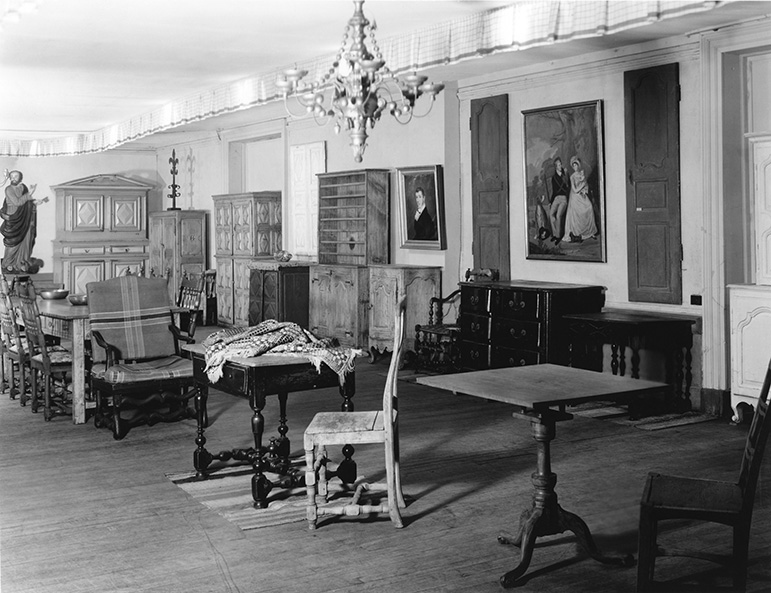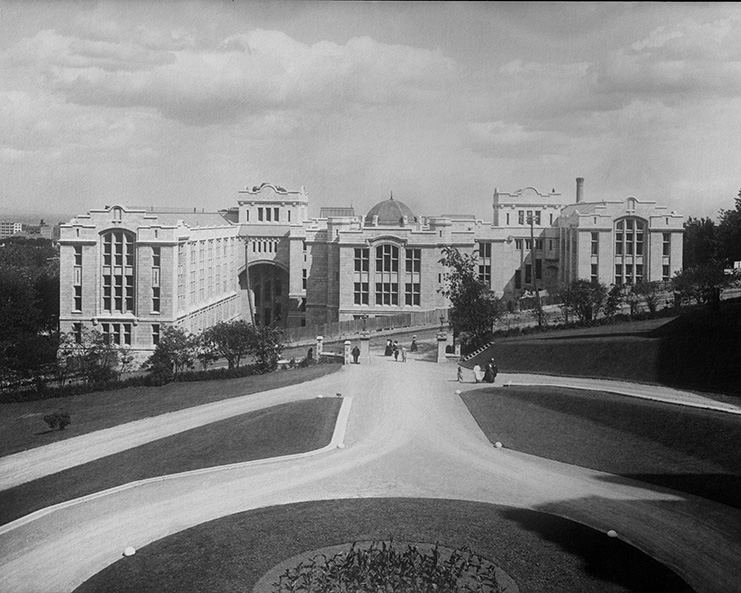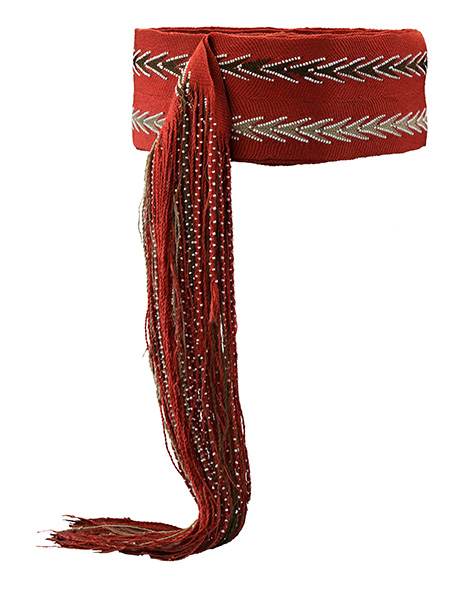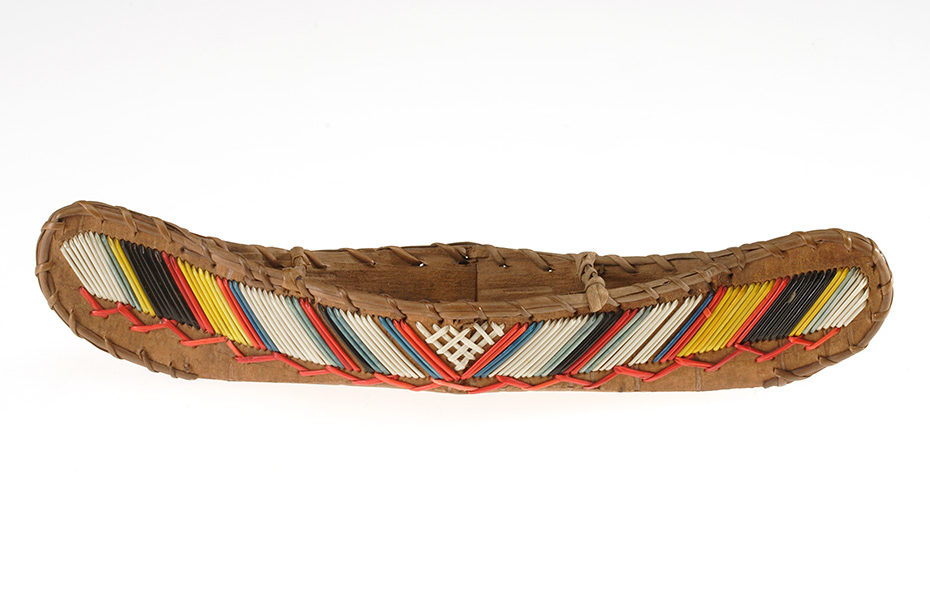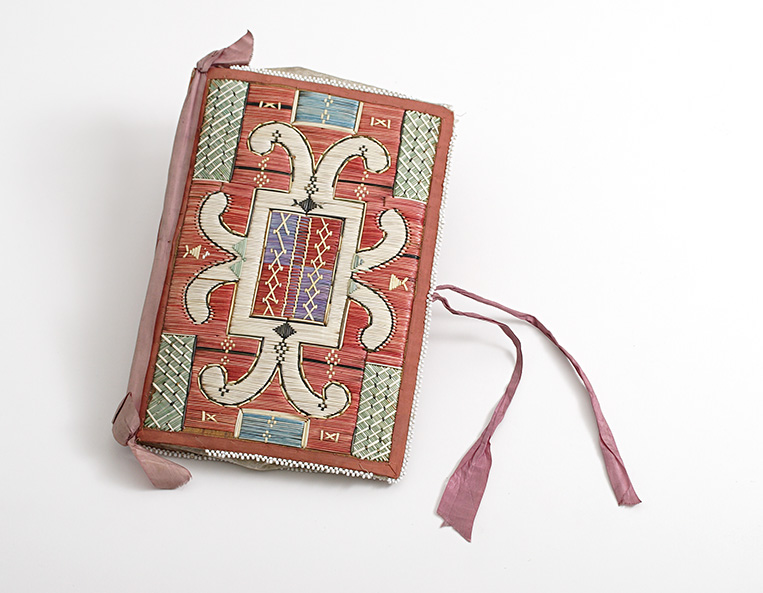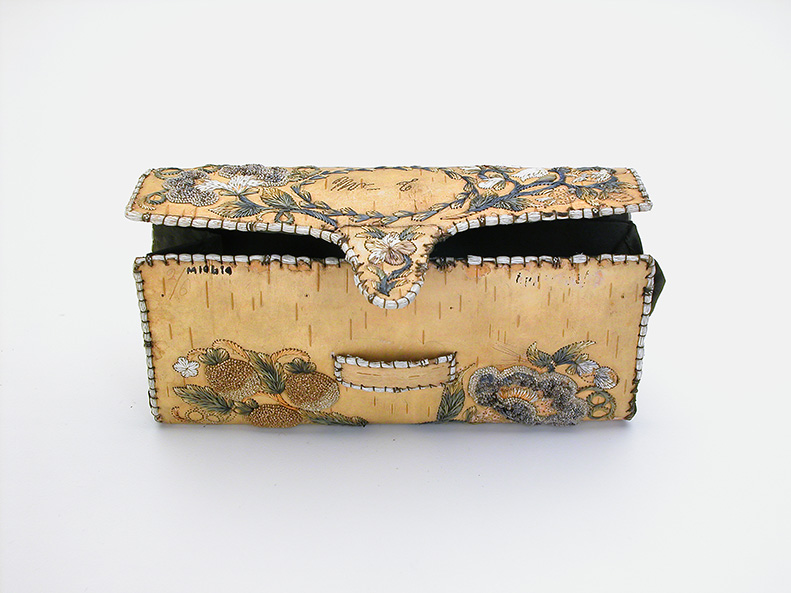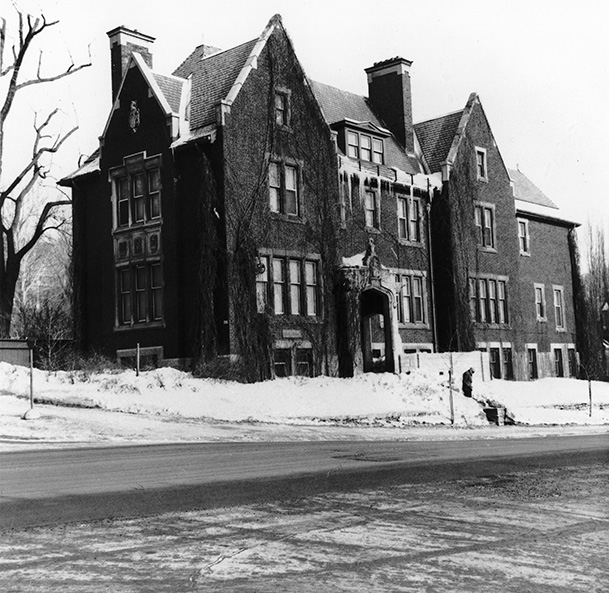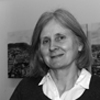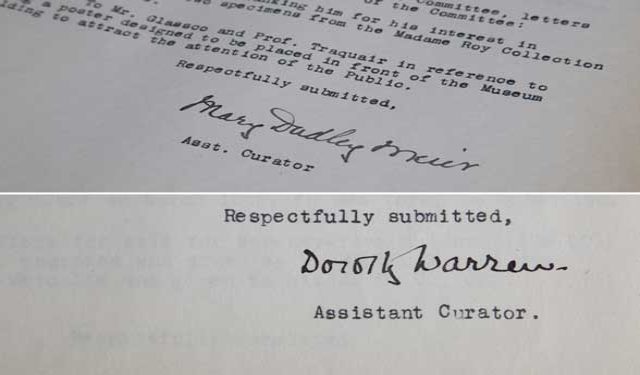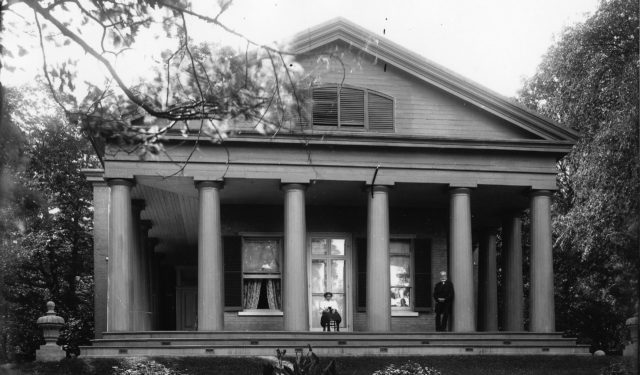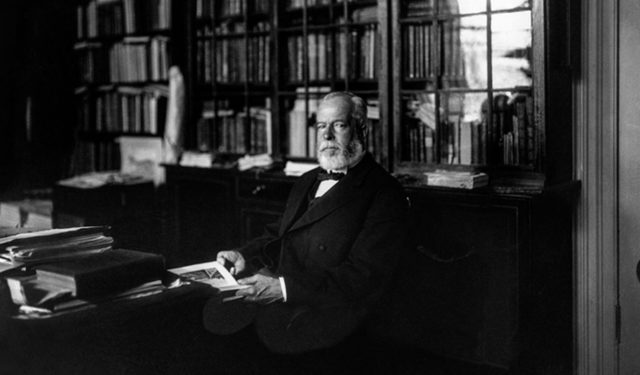Some Early Heroes of a Closed McCord Museum (Part I)
Forced to close twice in the past two years, the Museum has done this before. Learn how the McCord weathered a closure that lasted over two decades!
March 24, 2022
When pandemic lockdowns forced the closure of the McCord Museum to the public—twice—our staff members took up the challenge of making the museum available online, whether it was by organizing museum openings, exhibition tours, or fundraising events in virtual format. However, this was not the first time in its history that the McCord Museum had been closed to the public!
Monday, June 1, 1936. The blinds are drawn shut at the McCord National Museum, located on the southwest corner of the McGill campus.1 A small white card tacked to the door reads “closed.”2
After seven years of economic crisis, the Great Depression had taken its toll. Educational and cultural institutions, businesses and individuals had all suffered extreme financial hardship. McGill University was no exception, and its authorities were looking to cut costs wherever they could. On May 29, the Board of Governors announced the temporary closure of the McCord Museum to the public and, on May 31, it laid off Dorothy Warren, who was in charge of the Museum’s day-to-day affairs.
Some members of the public wrote letters of protest to the editors of local papers, while others supported the McCord Museum by donating objects. The University Museum Committee officially registered its disapproval of the decision, recording the letters of protest it received. Yet McGill did not budge on its decision, and the closure dragged on for months, years, and even decades. Despite this, staff members consistently made extraordinary efforts to promote the McCord Museum.
HELP FROM HENRY MORGAN & COMPANY
E. Lionel Judah (1880-1967), Curator of McGill’s Ethnological Museum and Secretary of the University Museum Committee, became the McCord Museum’s Acting Secretary and the first staff member to take on the challenge of the closed Museum. Judah benefited from the aid of a longtime member of the University Museum Committee, Frederick Cleveland Morgan (1881-1962).3 Passionate about the arts, Morgan was in charge of displays, special events, and the antique and art departments at the Henry Morgan & Co. department store (now The Bay), owned by his family. He melded his two interests when he proposed events and exhibitions that included objects from the McCord Museum.4
In the summer of 1938, the downtown Morgan’s store put a number of objects from the McCord Museum on display for the first time since the closure two years prior.5 A full-page advertisement in The Gazette invited readers to view a weeklong exhibit of Indigenous handicrafts at the store, including “museum pieces made long ago” by Indigenous “inhabitants of every province in the Dominion.”6 The McCord Museum was second on the list of institutions thanked for their contributions.
This special event and the attendant publicity undoubtedly benefited both the store, which offered an additional draw for shoppers, and the Museum, which gained visibility.
VISIBILITY, BUT LITTLE PUBLICITY
On other occasions, Judah organized loans of material from the McCord Museum to Morgan’s and elsewhere, but the Museum was not always recognized in the press. For example, no public mention has been found of the 32 drawings by Henri Julien lent to the National Gallery of Canada in 1938 for a travelling exhibition.7
When Morgan’s held a second exhibition the same year in their fifth floor auditorium that focussed on French-Canadian furnishings, it displayed a number of objects from the Museum, including a 17th century chandelier and a portrait of William McGillivray with his family. However, the newspapers only credited McGill University.
In ill health and approaching retirement, Lionel Judah seems to have done his best to promote and support the Museum’s interests under difficult circumstances. Arguably, one of his most significant gestures was his encouragement of an energetic young McGill student with a deep interest in museums.
A NEW STAFF MEMBER
In the fall of 1939, Alice Johannsen (1911-1992), a McGill Geology graduate, began working for the McGill University Museums. Thanks to Judah’s mentorship, after graduating Johannsen joined the apprenticeship program at the Newark Museum in New Jersey, which she followed with a fellowship in museum training at the National Gallery of Canada.8 She soon became a full-time Assistant Curator at the Redpath Museum, with frequent forays to the McCord Museum after Judah became ill and took a leave of absence.
WARTIME DELAYS
While the Depression had been difficult, the onset of the Second World War did not aid matters for the McCord Museum. In early 1942, Johannsen and two helpers spent three hopeful months cleaning the Museum from top to bottom, planning for a summer opening during Montreal’s Tercentenary celebrations. Although her plans were thwarted, it was an opportunity for Johannsen to survey the collections and make a list of valuable material to be transported to a “bomb-proof shelter” in the Strathcona Medical Building as a precaution in case of air raids.9
Throughout the rest of the decade, Johannsen strove to keep the McCord Museum’s collections in the public eye by facilitating loan exhibitions of all sizes, from small historical displays close to home in the McGill Library, to larger collaborations. A 1947 exhibition of clothing, tools and ceremonial objects of Indigenous peoples in Canada, held at the Art Association of Montreal (now the Montreal Museum of Fine Arts) in collaboration with the Quebec branch of the Canadian Handicrafts Guild, featured 30 objects from the McCord Museum.
HOPING FOR A NEW UNIVERSITY MUSEUM BUILDING
Johannsen also promoted the cause of the McCord Museum to McGill University authorities. Over the years, she and T. H. Clark (1893-1996), Director of the McGill University Museums, appealed to McGill in their annual reports and communications. They hoped to convince the University to proceed with a recommendation made in a 1932 report on the McGill University Museums: unite the majority of the University’s collections under the roof of a brand new building.
Alternative plans called for renovating and expanding the Redpath Museum to make room for permanent displays from the McCord Museum and the Ethnological collections. Johannsen also gave interviews to The McGill Daily and drafted articles for The McGill News, emphasizing the educational value of the University Museums in general and the importance of making the McCord Museum’s collections available to the public once more.
BUILDING MOMENTUM FOR THE McCORD MUSEUM
Perhaps as a result of Johannsen’s persistence, combined with postwar prosperity, McGill eventually loosened its purse strings and hired part-time help for the McCord Museum. Gilbert Ferrabee (1913-1997), a Montreal high school history teacher and McGill master’s student, was able to organize a greater number of historical exhibitions featuring the McCord Museum’s material at the McGill Library and Redpath Museum.
The resulting visibility led to an increase in requests involving the collections. In 1948, Johannsen noted that the staff’s work with the McCord Museum occupied nearly half of their time.10 By 1953, there were “almost daily demands involving consultation of records, lending of specimens, and organization of exhibits.”11 A year later, Johannsen managed to convince McGill to hire a full-time Curator for the McCord.
In 1956, Alice Johannsen’s involvement in a major acquisition—the archival collection of Montreal’s William Notman & Son photographic studio—put the McCord Museum in the public eye in a new way. Hundreds of thousands of negatives and prints dating from the 19th and early 20th centuries arrived, followed by Canada-wide publicity when Maclean’s magazine published a series of illustrated articles featuring “the fabulous Mr. Notman” and his photographs.
In 1960, the McCord Museum succeeded in opening small exhibition room in its cramped new quarters in the Hodgson House, only to close again a few years later in anticipation of a move to the former Student Union building at 690 Sherbrooke Street West. In 1971, the Museum was finally able to open its doors to the public in the newly renovated building, thanks to the continued fundraising efforts of Director Isabel Dobell, hired in 1955.
But that’s another story!12
NOTES
1. At that time, the McCord National Museum was one of the four McGill University Museums. The other three were the Peter Redpath Museum, the Ethnological Museum, and the Library Museum. In addition, there were a number of other specialized collections. McGill University, Calendar for the Session 1937-1938 (Montreal: Printed for the University by the Gazette Print. Co., 1937), p 491.
2. The Gazette, Saturday, May 30, 1936, p 7.
3. F. C. Morgan had been a member of the McCord Museum’s Managing Committee as early as November 1921.
4. He was also one of the Directors of Henry Morgan & Company. David Morgan lists Morgan’s roles at the department store in his book, The Morgans of Montreal (Toronto: Private Publication, 1992), p 140. Deeply involved in the arts in Montreal, Morgan was particularly interested in museums and the decorative arts. A member of the Art Association of Montreal as of 1907, he was appointed Chairman of its new museum, founded in December 1916. Morgan was also a member of the Arts Club and the Canadian Handicrafts Guild, serving as the latter’s president between 1918 and 1925.
5. This is not to say that other objects hadn’t been loaned out. For example, a large collection of stamps from the McCord’s collection was displayed in the McGill Library in 1937.
6. The Gazette, Wednesday, June 22, 1938, p 24.
7. Henri Julien drawings from McCord Collection retained for the National Gallery Exhibition, Ottawa, February 14, 1938. I001P/134, folder 7758.
8. Judah found her a scholarship for the Newark program and helped her apply to the Carnegie Corporation for the opportunity with the National Gallery. Alice Johannsen, “As the Twig is Bent,” in Margaret Gillett and Kay Sibbald, eds., A Fair Shake: Autobiographical Essays by McGill Women (Montreal: Eden Press, 1984) pp 114-15.
9. Other small valuables were placed in the vault in the Joseph House basement, which, it was said, could withstand 36 hours of extreme heat. McCord Museum, Annual Report 1941-1942, and McCord Museum, Annual Report 1942-1943, p 7, McGill University Archives RG41, container 11.
10. McGill University Museums, Annual Report 1947-1948, p 4.
11. McGill University Museums, Annual Report 1952-1953.
12. See Isabel Dobell, “Buried Treasure,” in Gillett and Sibbald, eds., A Fair Shake, 136-146.


